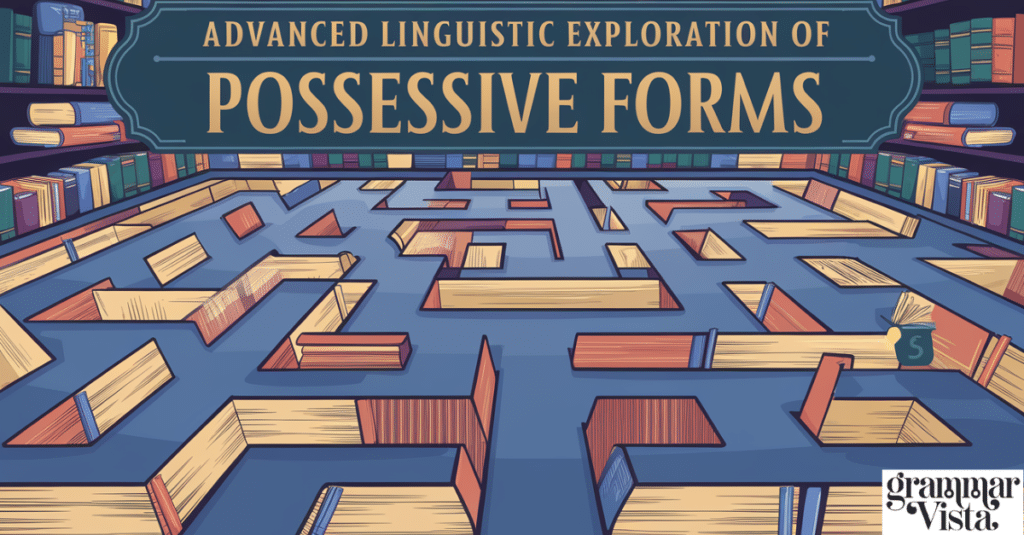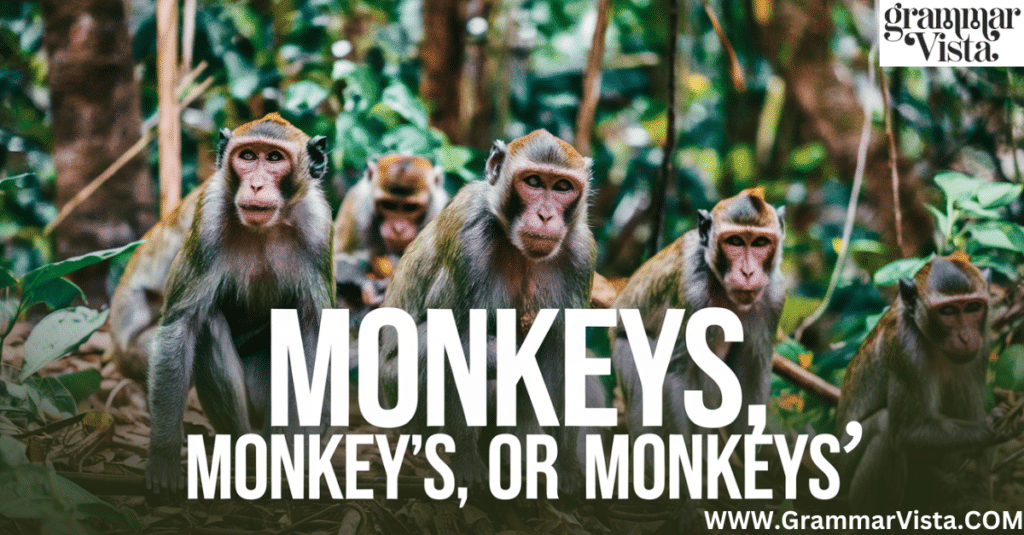Understanding the distinctions between “monkey’s,” “monkeys’,” and “monkeys” is essential for clear communication. Each form serves a specific purpose: “monkey’s” indicates possession by a single monkey, “monkeys’” denotes possession by multiple monkeys, and “monkeys” refers to the plural form without possession. This brief guide will clarify these uses, helping you navigate possessive forms and improve your writing accuracy. Let’s dive into the nuances of these terms!
Language can be tricky, especially when it comes to possessives. Singular and plural possessive forms often confuse even native English speakers. Let’s dive deep into the world of monkey-related grammatical mysteries!
The Basics of Possessive Nouns
When we talk about possessive forms, we’re essentially discussing ownership or belonging. The placement of the apostrophe can dramatically change the meaning of a sentence. Zookeepers observed that understanding these subtle grammatical nuances is crucial for precise communication.
Singular Possessive: Monkey’s

The term monkey’s represents single ownership or possession by one monkey. For example:
- A monkey’s tail is an incredible tool for balance and navigation.
- The monkey’s habitat typically includes dense forest environments.
Scenario Example: Imagine a zookeeper noting, “This monkey’s climbing technique is exceptional.” Here, we’re talking about the specific characteristic of one individual monkey.
Plural Possessive: Monkeys’

Monkeys’ indicates collective belonging or ownership by multiple monkeys. Consider these examples:
- Monkeys’ behavior can vary dramatically between different species.
- The researchers tracked how monkeys’ social interactions develop in natural habitats.
Scenario Example: A wildlife researcher might say, “The monkeys’ communication methods are incredibly complex.” This suggests multiple monkeys share a collective characteristic.
Plural Form: Monkeys

When we simply use monkeys (without an apostrophe), we’re referring to multiple primates without indicating possession.
Scenario Examples:
- “Monkeys swing through the trees.”
- “Several monkeys gathered near the research station.”
Practical Application and Nuanced Usage
Zookeepers observed that understanding these distinctions is more than just grammatical pedantry. In scientific documentation, precise language is paramount.
Complex Scenarios
Let’s explore some complex possessive scenarios:
- Single Monkey’s Characteristic
- A monkey’s tail provides incredible support during climbing.
- This emphasizes a feature belonging to one specific monkey.
- Multiple Monkeys’ Shared Characteristic
- The monkeys’ mischievous nature often surprises researchers.
- Here, we’re discussing a trait common to a group of monkeys.
Read More about Business’ or Business’s?
Linguistic Curiosities
Researchers tracked how different primates use handheld devices in experimental settings. This research reveals fascinating insights into mischievous or playful monkey behaviors.
Common Mistakes to Avoid
- Don’t confuse “monkey’s” (single ownership) with “monkeys'” (multiple ownership)
- Always consider whether you’re discussing one monkey or multiple monkeys
- Context is key in determining the correct possessive form
The Importance of Precision
In scientific and observational writing, the difference between “monkey’s” and “monkeys'” can significantly impact the understanding of research findings.
Understanding the nuanced world of possessive nouns transforms how we communicate about monkeys, their behaviors, and their fascinating characteristics. Whether discussing a single monkey’s tail or multiple monkeys’ collective habits, precision matters.
Pro Tips
- Read your sentences aloud
- Consider the number of monkeys you’re discussing
- Pay attention to context
- When in doubt, break down the sentence to clarify ownership
Advanced Linguistic Exploration of Possessive Forms

The Etymology of Possessive Constructions
Linguistic historians have long been fascinated by the development of possessive forms in language. The apostrophe’s journey is a remarkable tale of grammatical evolution. Researchers tracked how different cultures developed methods to express ownership and relationship in language.
Historical Context of Possessives
The use of apostrophes to indicate possession emerged in English during the 16th century. Initially, it was a complex system that evolved from Old English case endings. Zookeepers observed similar patterns of evolution in communication systems among primates, drawing interesting parallels to human linguistic development.
You might be interested in Travis’s or Travis’
Deep Dive into Possessive Grammatical Structures
Contextual Usage Variations
Monkeys’ behavior provides a fascinating lens through which we can examine linguistic nuances:
- Singular Possessive Scenarios
- A monkey’s intelligence can be measured through various cognitive tests
- The monkey’s habitat reflects its adaptive capabilities
- One monkey’s tool use demonstrates remarkable problem-solving skills
- Plural Possessive Explorations
- The monkeys’ social hierarchy is intricate and dynamic
- Multiple monkeys’ communication methods reveal complex social structures
- Several monkeys’ interactions provide insights into group dynamics
Scientific Perspectives on Possession
Natural habitat studies reveal fascinating insights into how possession is conceptualized in primate societies. While humans use grammatical markers, monkeys demonstrate possession through:
- Physical proximity
- Behavioral cues
- Territorial markers
- Social hierarchies
Comparative Linguistic Analysis
Interestingly, handheld devices used in research demonstrate how different species conceptualize ownership:
- Humans use linguistic markers
- Primates use physical and behavioral indicators
- Some advanced primates show rudimentary understanding of object ownership
Linguistic Challenges and Nuances

Common Misconceptions
Many people struggle with possessive forms due to:
- Inconsistent rule applications
- Complex grammatical exceptions
- Subtle contextual differences
Scenario Examples:
- “The monkeys tail” (Incorrect)
- “The monkey’s tail” (Correct – single monkey)
- “The monkeys’ tails” (Correct – multiple monkeys)
Psychological and Cognitive Implications
Researchers tracked how understanding possessive forms relates to:
- Cognitive development
- Language acquisition
- Conceptual understanding of ownership
Mischievous Learning Patterns
Mischievous or playful approaches to learning grammar can make complex rules more accessible. Consider these engaging learning techniques:
- Storytelling with possessive examples
- Interactive grammatical games
- Visual representations of ownership
Cross-Species Communication Insights
Zookeepers observed interesting parallels between human and primate communication:
- Both use complex communication systems
- Ownership is communicated through multiple channels
- Contextual understanding is crucial
Practical Application Strategies

Tips for Mastering Possessive Forms
- Always identify the number of possessors
- Consider the context of ownership
- Practice through varied writing exercises
- Listen to native speakers
- Read extensively to internalize patterns
Technological Aids in Learning
Modern handheld devices offer unprecedented opportunities for language learning:
- Grammar checking applications
- Interactive linguistic tools
- Real-time translation services
Read More grammar lessons on GrammarVista
Conclusion
Language is a dynamic, evolving system that continues to surprise and delight. Possessive forms are not just grammatical rules but windows into how we perceive relationships, ownership, and connection.
Whether discussing a monkey’s tail or multiple monkeys’ behaviors, precise language allows us to:
- Communicate effectively
- Share complex ideas
- Bridge understanding between species and cultures
The journey of understanding possessive forms is ongoing, mischievous, and endlessly fascinating.







